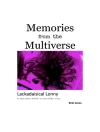Adeline Virginia Woolf (1882 – 1941) is considered one of the most important modernist 20th-century authors and a pioneer in the use of stream of consciousness as a narrative device and for a demonstration of the sheer vitality of Virginia Woolf's writing, Orlando is unsurpassed. The novel is a provocative exploration of gender and history, as well as of the nature of biography itself; perhaps surprisingly, given these highly intellectual concerns, it was highly popular when first published. Following Orlando over a 400-year life full of adventure, love, and a shift in gender, the character was apparently based on Woolf's lover, Vita Sackville-West. In the court of Elizabeth I, Orlando is a dazzlingly handsome sixteen-year-old nobleman. There follows a frost fair on the Thames, at which a love affair with a Russian princess begins, only to end in heartache. Later Orlando is sent by Charles II as ambassador to the Ottoman court in Constantinople, where he becomes a woman, before returning to England to reside in the company of Pope and Dryden. A marriage in the nineteenth century leads to a son and a career as a writer, and the story ends in 1928, as Woolf's text was published. This extraordinary tale is augmented by a series of writerly flourishes, questioning our conception of history, of gender, and of biographical ‘truth.’ If these are constructs, then who constructs them? What do they mean for individuals living and telling their lives? Woolf uses a series of devices to facilitate this kind of speculation: clothes are prominent, as is their role in shaping perceptions of gender; the narrative voice, too, is brilliantly conscious of itself, and of us as readers. It is a remarkable text
A propos de l’auteur
Adeline Virginia Woolf was born in Kensington, England, on January 25, 1882. Daughter of an affluent family, her father, Leslie Stephen, was an editor and literary critic. Influenced by her father and provided with a good education, Virginia developed an interest in the literary world.
While her siblings received their education at a school, she, on the other hand, was educated at home, a fact that left her quite irritated. At that time, women still did not have the opportunity to study outside the home, so she spent many afternoons reading books from her father's library.
When she was only 13 years old, her mother passed away, and almost 10 years later, her father. In 1905, alongside some artists, Virginia became part of the Bloomsbury Group. Meetings took place at her home, and the group's most important shared characteristics focused on criticizing bourgeois society, philosophy, aesthetics, arts, as well as leftist and liberal tendencies. The following year, one of her brothers passed away, a difficult and impactful moment in the writer's life. In 1912, she married writer and editor Leonard Woolf, and together they founded the Hogarth Press in London.
In 1915, she released her first novel, ‘The Voyage.’ From then on, Virginia began working as a writer, and it was only years later that she started gaining recognition with the publication of ‘Mrs. Dalloway’ in 1925. Virginia Woolf died by suicide in Lewes, England, on March 28, 1941, at the age of 59. Prior to the tragic event, she wrote two letters, one to her husband and another to her older sister, Vanessa Bell. Virginia drowned in the River Ouse, having placed stones in the pockets of her coat.












